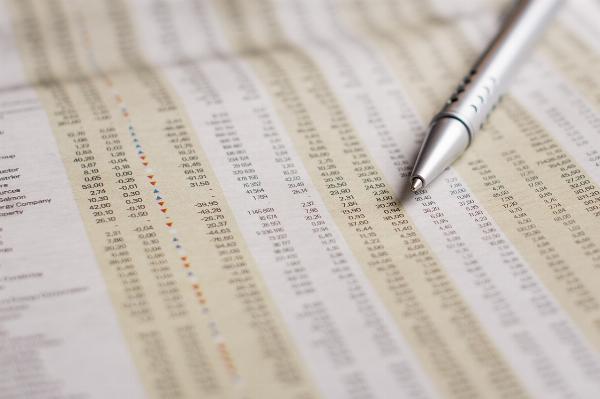Understanding the Dow Jones Industrial Average and Its Importance

Strong 8k brings an ultra-HD IPTV experience to your living room and your pocket.
The Dow Jones Industrial Average is probably one of the most famous stock market indices in the world. Moreover, it is a basic measure of how the U.S. stock market and the economy are functioning. Investors, analysts, and economists keep a vigilant eye on it, day in and day out, to stay abreast of market trends. It indicates the performance of 30 major companies, thus making it an important tool in understanding how the economic health of a nation is gauged. It is one way that businesses can be seen doing well and one measure of investor confidence. It is very closely followed internationally because of the influence it has on financial markets, making it another very important scale for analyzing economies.
1. The Dow Jones Industrial Average history
The index was the brainchild of Charles Dow and Edward Jones and was first installed as long ago as 1896. When it was formed the first time, it included only 12 industrial companies; today, it houses 30 major firms. The index itself represents some of the biggest, most influential companies in the United States across almost all possible industries. Over the years, it managed to extend its reach to include some companies from different sectors in sync with the evolutionary process that occurred in the collective economy. As technology and healthcare processed the growth of new companies, replacements for the older were also integrated. This ability to adapt has kept it relevant for over a century. Today, it remains a major touchstone in analyzing stock market performance.
2. How the Dow Jones Industrial Average Works
The index is price-weighted; therefore, expensive stock has a larger effect on the movement of this index than a cheaper stock. Unlike the indices that weigh according to the market capitalization, here the size of the company does not matter. It reflects, instead, the price fluctuation over time of selected stocks, making it different from many other stock indices like the S&P 500. The index includes thirty blue-chip companies, and performance indicates the broader trends of the economy. Borrowing from this, investors and analysts watch fluctuations for a more informed view of general market sentiment.
3. Important Businesses in the Dow Jones Industrial Average
The Dow Jones Industrial Average features various companies from different sectors, such as technology, healthcare, consumer goods, and financial services. Among the best-known names in this index are Apple, Microsoft, Johnson & Johnson, and Goldman Sachs. These well-known companies impacted the market strongly concerning economic stability. Each company on the list is a leader in its industry, thereby making Dow a really effective measure of corporate health. These sectors diversify the risk and money, improving the downside from the ratchet process. When big, known companies do well, the index hikes, indicating economic growth. Losses or declines in these companies could signify the recession amounts.
4. How the Dow Jones Industrial Average Affects Investors
For the investor, the Dow Jones Industrial Average serves as a critical barometer. Many funds and portfolios measure themselves against the Dow. By following the index, it becomes relatively clear to the investor the performance of the major companies and the decision on whether to buy, sell, or hold shares. The Dow adds to the ability to strategize and decide in relation to market momentum. An upward movement indicates healthy economic activity; hence, the trend ascends. A downward trend may lead reassessment in strategy for the investors. Understanding the performance of the Dow also leads to the exposure of long-term portfolio investment opportunities.
5. The Relationship Between the Dow Jones Industrial Average and the Economy
the index gets stronger, it usually denotes that businesses are excellent, there is good employment, and there is much healthy consumer spending. However, if the stock off-the-Dow declines, it may denote macroeconomic slowdowns, uncertainty, and troubles threatening different industries. The Dow becomes the subject of most economists for impending cycles in the economy. In fact, steady growth is usually an anticipation of prosperity; a sudden decrease or a marked decline is a harbinger of recessions. Since the companies are indexing multiple industries; the combined resultant performance gives an accurate picture of the financial health of the nation. A stable Dow is therefore a blessing to both investors and consumers.
6. Investing in the Dow Jones Industrial Average
Investors can become part of the Dow Jones Industrial Average by investing in individual stocks of companies that comprise the index or by purchasing ETFs that track the performance of the Dow. Such investments give exposure to a diversified portfolio of leading companies. Most probably that drives such preference for an ETF as investors might reap the gains of the Downtown overall without having to buy stocks themselves. Long-term investors often see it as an index trendsetter for portfolio diversification. These will lead to ways for better steadily growing financially with lesser market risk based on the understanding of the Dow's trends and the correct investment.
7. Factors That Influence the Dow Jones Industrial Average
The make-or-break factors for the Dow Jones Industrial Average include several important ones: the economic data collected, the earnings released by companies along with their profits, interest rates and geopolitical events. Good news, strong job growth, or company profits may push the index higher, while bad news does the opposite. Trade policies and inflation concerns, events from a global perspective - hit the Dow as well. Investors assess these environments to help determine where the market may be headed. The actions made by the Federal Reserve impacting the decision whether to increase or decrease interest rates also result in significant consequences to the psyche of investors. Investors spot all these variables and make changes in their financial strategy when needed.
Conclusion
The Dow Jones Industrial Average is a crucial measure of the economy in the world. It indicates how big companies earn and gives a snapshot of how robust or otherwise economies are at any moment. Investors and analysts can look to the index to inform them of what is going on and hope to learn more about the health of the stock market and economy. As one of the most credible indicators, the Dow indicates possible market trends. It is still a basic part of financial analysis irrespective of whether it informs policymakers, businesses, or individual investors. Retaining this image of the new Dow would mean better investment decisions and improved financial planning for the future.
Note: IndiBlogHub features both user-submitted and editorial content. We do not verify third-party contributions. Read our Disclaimer and Privacy Policyfor details.







